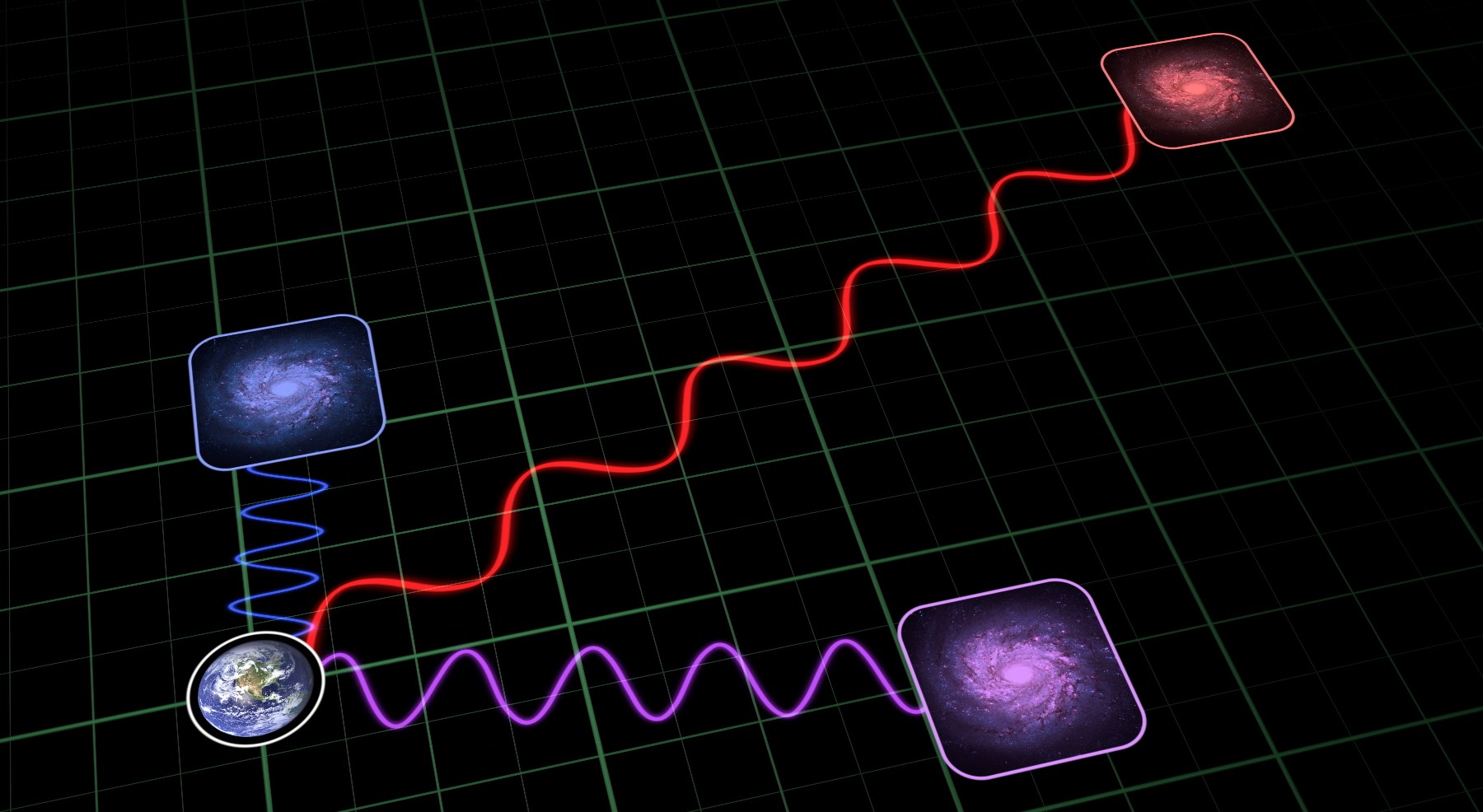
Redshift is a fascinating concept in physics that has intrigued scientists and astronomers for decades. It refers to the phenomenon in which light from distant celestial objects appears to be shifted towards longer wavelengths, or the red end of the spectrum. This effect has revolutionized our understanding of the universe and has provided crucial insights into the expansion of the universe and the nature of galaxies. In this article, we will delve into the enigmatic world of redshift and explore 20 intriguing facts that will expand your knowledge of this captivating phenomenon. From its discovery to its applications in cosmology, get ready to unravel the mysteries of redshift and gain a deeper appreciation for the wonders of the cosmos.
Key Takeaways:
- Redshift is a cosmic phenomenon that shows how the universe is expanding, like a balloon being inflated. It helps scientists understand the age, structure, and fate of the universe.
- By studying redshift, scientists have discovered dark energy, dark matter, and the accelerating expansion of the universe. It’s like solving a cosmic puzzle, revealing the secrets of the universe’s past, present, and future.
The Discovery of Redshift
The concept of redshift was first observed by astronomer Vesto Melvin Slipher in the early 20th century. He noticed that the spectral lines of galaxies appeared shifted towards longer wavelengths, indicating that they were moving away from us.
Doppler Effect and Redshift
The redshift phenomenon can be explained by the Doppler Effect, which states that the wavelength of light is stretched when the source is moving away from the observer. This principle also applies to sound waves and is responsible for the change in pitch of a passing ambulance siren.
Expansion of the Universe
Redshift is a direct consequence of the expansion of the universe. As space expands, it stretches out the wavelengths of light, causing an increase in redshift. This observation led to the development of the Big Bang theory, which suggests that the universe originated from a single point of extreme density and has been expanding ever since.
Hubble’s Law
Astronomer Edwin Hubble discovered a correlation between the distance of galaxies and their redshift. This relationship, known as Hubble’s Law, provides evidence for the ongoing expansion of the universe.
Cosmological Redshift
The cosmological redshift occurs due to the expansion of the universe and is a key piece of evidence supporting the Big Bang theory. It is the result of the stretching of the fabric of space itself, causing all light to exhibit redshift as it travels through expanding space.
Velocity and Redshift
The amount of redshift observed in the spectrum of a galaxy is directly proportional to its velocity relative to Earth. This relationship allows astronomers to measure the speeds at which galaxies are moving away from us.
Redshift and the Age of the Universe
By analyzing the redshift of distant galaxies, scientists have been able to estimate the age of the universe. The current estimate is approximately 13.8 billion years, based on the observation of the most distant galaxies with the highest redshifts.
Blueshift
While redshift indicates that an object is moving away from us, the opposite effect, known as blueshift, occurs when an object is moving towards us. It causes a compression of the light waves and a shift towards shorter wavelengths.
Redshift in Cosmology
Redshift plays a crucial role in the field of cosmology, allowing scientists to study the large-scale structure of the universe, measure distances to galaxies, and understand the expansion rate of the universe.
Redshift and Dark Energy
Redshift measurements have provided significant evidence for the existence of dark energy, a mysterious force responsible for the accelerated expansion of the universe.
Quantifying Redshift
Redshift is quantified using the z-value, which represents the fractional change in wavelength of light. A higher z-value indicates a higher redshift and, therefore, a higher velocity of recession.
Redshift and Cosmic Microwave Background
Redshift measurements of the cosmic microwave background radiation have provided valuable insights into the early universe and its evolution since the Big Bang. The redshift of this radiation is extremely low, around 1/1100, indicating that it originated when the universe was around 380,000 years old.
Gravitational Redshift
In addition to cosmological redshift, there is also gravitational redshift, which occurs when light passes through a gravitational field. This effect was confirmed by the experiments conducted during the 1919 solar eclipse, where the light from distant stars was observed to be slightly redshifted as it passed near the Sun.
Redshift and Dark Matter
Redshift measurements have provided important clues about dark matter, an invisible substance that significantly contributes to the total mass of the universe. By studying the motions of galaxies, scientists can infer the presence of dark matter based on the observed redshift.
Redshift and Quasars
Quasars, or quasi-stellar objects, exhibit extremely high redshifts, indicating that they are some of the most distant objects in the universe. Their redshifts have provided valuable information about the early stages of galaxy formation and the evolution of supermassive black holes.
Redshift and Galaxy Clusters
By studying redshifts within galaxy clusters, astronomers can gain insights into the dynamics and formation of these massive structures. The distribution of redshifts within a cluster can reveal the gravitational interactions and motions of the galaxies within it.
Relativistic Redshift
According to Einstein’s theory of general relativity, even gravity can induce a redshift in light as it escapes from a massive object. This phenomenon, known as relativistic redshift, has been observed in the light coming from stars near the center of our galaxy.
Redshift and the Fate of the Universe
Studying the redshift of galaxies can help scientists make predictions about the ultimate fate of the universe. Depending on the amount of observed redshift, three possible scenarios arise: a “closed” universe that will eventually collapse, an “open” universe that will continue to expand forever, or a “flat” universe that will expand at a decreasing rate.
The Search for High-Redshift Galaxies
Astronomers are constantly searching for galaxies with extremely high redshifts, as they provide insights into the early stages of the universe. These galaxies, known as “primordial galaxies,” offer valuable clues about the formation of the first stars and the reionization epoch.
Redshift and the Accelerating Universe
Redshift measurements have revealed that the expansion of the universe is not only continuing but accelerating over time. This discovery, which earned the 2011 Nobel Prize in Physics, points to the existence of dark energy and has raised new questions about the nature of the universe.
Conclusion
In conclusion, redshift is a fascinating phenomenon that has revolutionized our understanding of the universe. These 20 enigmatic facts about redshift have shed light on the expansion of the universe, the nature of distant galaxies, and the mystery of dark energy. From Hubble’s groundbreaking observations to the discovery of cosmic microwave background radiation, redshift has provided invaluable insights into the origin and evolution of our cosmos.
By understanding redshift, scientists have been able to piece together the puzzle of the Big Bang theory and uncover the secrets of the universe’s past, present, and future. Redshift continues to be a vital tool in astronomy and cosmology, allowing us to explore the vast depths of space and unravel the mysteries that lie beyond our reach.
FAQs
1. What is redshift?
Redshift is a phenomenon in which light from distant objects in space appears to be shifted towards longer wavelengths, indicating that the object is moving away from us. This is a result of the expansion of the universe.
2. How is redshift measured?
Redshift is measured by examining the spectrum of light emitted by an object. The shift in wavelengths can be calculated and used to determine the object’s velocity and distance from us.
3. What causes redshift?
Redshift is primarily caused by the expansion of space. As the universe expands, the wavelengths of light stretch, leading to a shift towards longer wavelengths.
4. Can redshift be used to measure distance?
Yes, redshift can be used to estimate the distance of objects in space. The amount of redshift observed in an object’s spectrum is directly related to its distance from us.
5. How does redshift support the Big Bang theory?
Redshift provides evidence for the expansion of the universe, which is a key component of the Big Bang theory. The observation of redshift in distant galaxies suggests that the universe is continuously expanding.
6. Are there different types of redshift?
Yes, there are two main types of redshift: cosmological redshift and Doppler redshift. Cosmological redshift is caused by the expansion of the universe, while Doppler redshift occurs when an object is moving away from us.
7. Can redshift be used to study the evolution of galaxies?
Yes, redshift is a powerful tool for studying the evolution of galaxies. By analyzing the redshift of light emitted by galaxies at different distances, scientists can trace the history and formation of galaxies over billions of years.
8. Does redshift have any implications for dark energy?
Yes, redshift plays a crucial role in our understanding of dark energy. The observation of redshift in distant supernovae led to the discovery of dark energy, a mysterious force that is accelerating the expansion of the universe.
9. Is redshift the same as blueshift?
No, redshift and blueshift are opposites. While redshift refers to the shifting of light towards longer wavelengths, blueshift refers to the shift towards shorter wavelengths, indicating that an object is moving towards us.
10. Can redshift be used to study the age of the universe?
Yes, redshift is instrumental in estimating the age of the universe. By measuring the redshift of distant objects and combining it with other cosmological parameters, scientists can make calculations to determine the age of the universe.
Was this page helpful?
Our commitment to delivering trustworthy and engaging content is at the heart of what we do. Each fact on our site is contributed by real users like you, bringing a wealth of diverse insights and information. To ensure the highest standards of accuracy and reliability, our dedicated editors meticulously review each submission. This process guarantees that the facts we share are not only fascinating but also credible. Trust in our commitment to quality and authenticity as you explore and learn with us.


